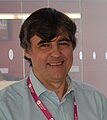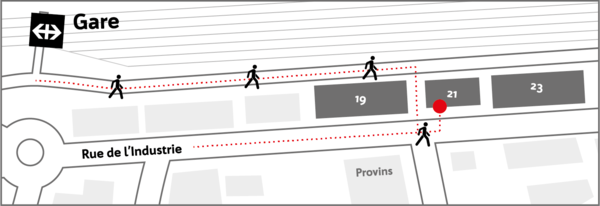EMR 2022
Modelling and control using EMR, application to HEVs and others
Summer School of University of Sion of Applied Sciences (Switzerland)
The 14th EMR (Energetic Macroscopic Representation) international summer school has been organized by University of Applied Sciences of Western Switzerland in Sion (Switzerland) , co-organized by University of Lille (France), from the 20th to 22th of June 2022 in hybrid mode. EMR’22 has proposed 5 lectures on concepts, 19 lectures on applications, 2 simulation sessions (1 face-to-face and 1 on-line). In terms of attendees, there were 41 attendees from 10 countries[1] (22 in-presence and 19 on-line). EMR’22 has been supported by scientific organizations (IEEE-VTS, MEGEVH, L2EP), the H2020 PANDA project and a strong industrial support of Typhoon HIL.
[1] Argentina, Belgium, Canada, France, Germany, Portugal, Romania, Serbia, Switzerland, Vietnam,
Presentation
This summer school is focused on the Energetic Macroscopic Representation (EMR) methodology for modelling and control of complex electromechanical systems.
EMR is a graphical formalism that was introduced in 2000 to describe complex electromechanical systems. EMR has since been extended to complex multi-physical systems (thermal science, electrochemistry, fluid mechanics …). EMR is based on the action-reaction principle to organize the interconnection of models of sub-systems according to the physical causality (i.e. integral causality). This description highlights energetic properties of the system (energy accumulation, conversion and distribution). Moreover, an inversion-based control can be systematically deduced from EMR using specific inversion rules.
Compared with other graphical description, such as Bond Graphs or Causal Ordering Graphs (COG), EMR has a more global energetic view and contributes to system’s control design. It differs from structural description tools such as Physic Modelling Language (PML) using Object-Oriented Modelling Language, which makes its libraries to be coupled in the same way as physical units. EMR is focused on the system function and not only on the system structure. EMR gives insights into the real energy operation of systems and allows a deep understanding of its potentialities from a dynamic point of view.
In short, the distinct features of EMR lie in its clarity of physical concepts, as well as their physical causality, and its functional description rather than a structural description. It hence contributes significantly to the design of control and energy management of systems.
Summer School
This Summer School is aimed at Master and PhD students, Engineers and scientists, from both academia and industry, who have to model and control new multi-physical systems such as industrial multi-drive systems, traction and propulsion systems, hybrid electric vehicles, or renewable energy generation systems.
Chair

Prof. Philippe BARRADE - General Chair of EMR'22 (University of Applied Sciences Western Switzerland)
Co-Chair

Prof. Alain BOUSCAYROL - Co-Chair of EMR'22 (University of Lille, L2EP, MEGEVH, France)
Location
EMR'22 Summer School address: HES-SO Valais/Wallis, Rue de l’industrie 21, 1950 Sion, Switzerland.



